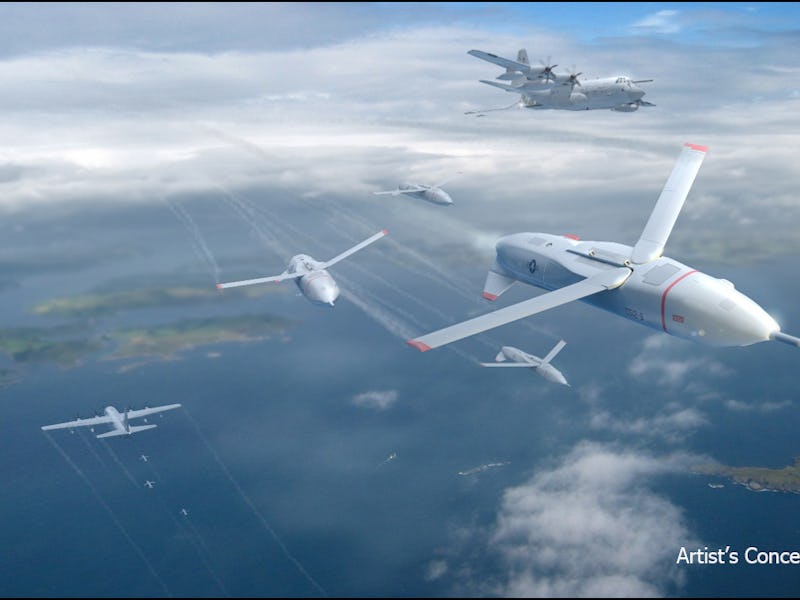Self-Flying Aircraft Can Be a $30 Billion Industry by 2036, Study Suggests
But it's going to take some changes.

Drones film the sports we watch on TV and assist farmers in taking care of acres of crops. The self-flying aircraft business has already seen a boom in recent years, but a recent industry study says it might only soar higher.
Aerospace consulting firm Avascent and the Aerospace Industries Association have released a joint report that projected the “explosive growth” in the international market for unmanned aircraft systems, or UAS.
The analysis, aptly titled “Think Bigger: Large Unmanned Systems and the Major Shift in Aviation”, estimated that by 2036 money spent on large UAS will surge to $30 billion annually. If that happens, consumers will see a major shift in how air travel is conducted and how cargo is moved.
This doesn’t mean our lives will be filled with more personal autonomous quadcopters. The paper focuses on UAS heavier than 55 pounds, which ranges from courier aircraft capable of delivering Amazon packages to 200,000-pound commercial airliners.
How the paper defines large unmanned aircrafts.
“We have got to think bigger when it comes to the future of unmanned aviation,” Eric Fanning, the CEO of the AIA, said in a statement. “The future unmanned systems market will change the way we travel and transport products. We could see entirely new economic centers where they don’t exist today. It’s an incredible opportunity – if government and industry start now on the regulations and technology to realize that potential.”
The logic is a lot like the push to get self-driving cars into action: With a solid infrastructure, a lot of tasks that simply require a vessel to travel from point A to point B can be automated. However the paper also points out the glaring roadblocks in the way.
The biggest one is regulation can’t really keep up with innovation, which might be for the best sometimes. An uncrewed jet might be completely possible, but it probably won’t become a commercially available flight option until extensive tests are conducted and security measures enacted.
Possible applications for large UAS.
Even now, a majority of Americans are pretty nervous about taking a ride in a fully self-driving car. A recent AAA survey found that 63 percent of U.S. drivers reported being afraid of getting driven around by A.I.
Imagine asking those same people to get on a fully autonomous airplane for five hours?
The report is hopeful and cites the acceptance of small UAS as a sign for the rise of larger autonomous aircrafts. However, to fully achieve that $30 billion estimate, society would have to quickly overcome its fear of technology like this and immediately start building up the necessary infrastructure.
With determination like that, maybe we will be flying without a pilot in 20 years.